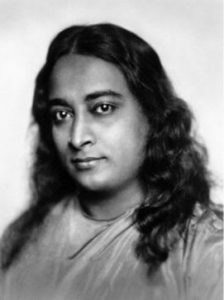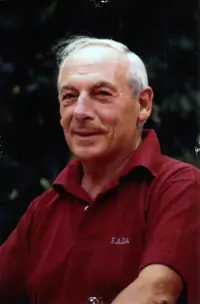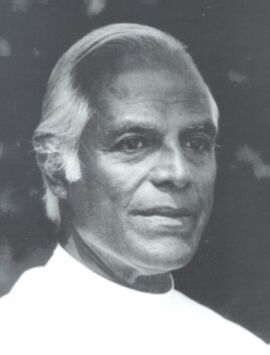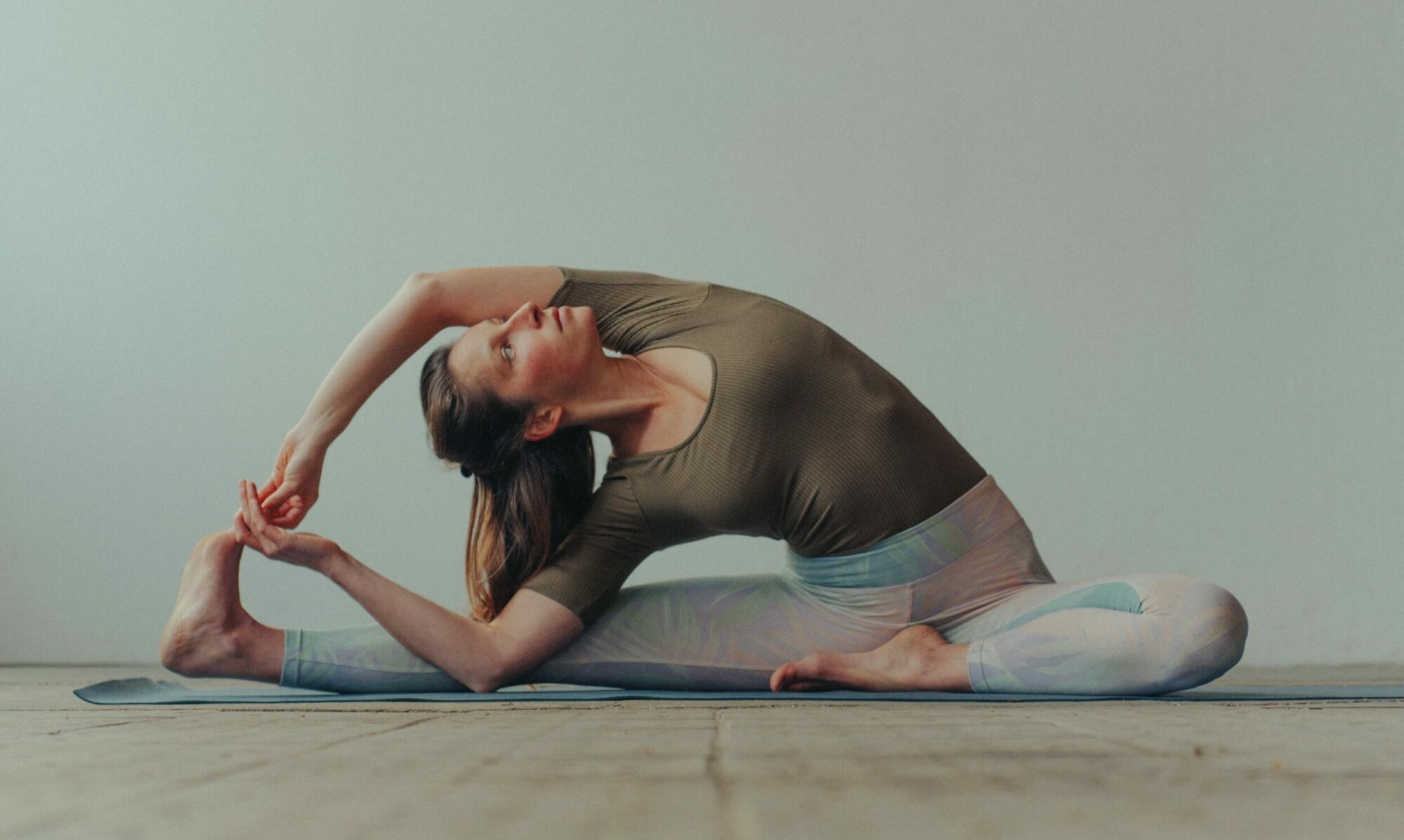Early relations with India
At the end of the 18th century, a lively interest in Indian cultural heritage began to develop in Theosophical circles. The English had already occupied India for some time, so there was already travel and exchange. Theosophists were interested in Indian cultural heritage and philosophies; the Bhagavad Gita and Patanjali’s yoga sutras in particular were translated into German for the first time at this time. Also Vivekananda (1863 – 1902, left picture) and later Yogananda (1893 – 1952, right picture) are great Indian personalities who were well-known in the West and whose writings provided an essential basis for debate.


It was something special, but not uncommon, when theosophists and occultists also invited fakirs to Europe to deal with them. There are some well-known names and photo documentations. Indian teachers were also active in Germany: e.g. Yogi Matho or Yogi Vithaldas. The methods were demonstrated, including the physical exercises, and these phenomena were investigated and researched. However, it was primarily the mental exercises that were practiced.
However, the practice of physical exercises was generally warned against in detail. The well-known Theosophist Helena Blavatsky, for example, who certainly had authority as the president of the Theosophical Society, had this to say:

“I would strongly discourage any student from attempting any of these Hatha Yoga exercises because they will either ruin themselves completely or set themselves back so far that it will be almost impossible to regain the lost ground in this incarnation… Beware I say!”
(The quote is taken from Christian Fuchs’ doctoral thesis “The Reception of Yoga in Germany” 1989)
Sports “physical training” in the West at the same time as Krishnamacharia’s yoga for the general population
Even before 1900, various efforts were made to develop a new physical culture, which was originally – as in India – intended to strengthen the military strength of the people. Ling’s or “Swedish gymnastics” was a basis for military drill. Jahn, the father of gymnastics, was certainly also a forerunner who initially allowed the male sex to exercise. The initially military-style popular training meant keeping the people healthy and making them fit to defend themselves; only later were women also allowed to practise gymnastics.
Some of the movements in men’s gymnastics, as well as women’s gymnastics , are reminiscent of yoga positions. If you compare the images, i.e. German gymnasts and gymnastics ladies with Indian yogis, they appear identical from the outside.

If you would like to find out more, I recommend the following literature:
- Kunstkörper – Körperkunst / Texts and images on the history of mobility
- The history of modern body yoga
A black chapter: Yoga under National Socialism
In the period before the Second World War (1941 – 1945), i.e. in the 1920s and 1930s, it was still the theosophists and occultists who were concerned with “Indian fakirtum”. There was a whole series of books and events, as well as reports in daily newspapers and specialist journals. However, the focus of interest was still clearly on the occult background, not on a physical practice.
Issberner-Haldane and J.W. Hauer were also active at this time, both of whom held views that probably seem strange to us. They studied the original Indo-Aryan scriptures, i.e. the Vedas and the Bhagavad Gita, and in the 1930s increasingly publicly professed that these “Aryan scriptures” should not be read by Jews, as they would contaminate them!
Yoga was intended to create an Aryanism that corresponded to the attitude of National Socialism! There is some evidence of this. The book Yoga under National Socialism by Matias Tietke provides some well-researched insights into this.
The practice of yoga was not banned during the Second World War, as is generally assumed.
A further indication of the misuse of yoga philosophy for National Socialism is Heinrich Himmler himself, who personally, but also within the SS, reinterpreted the teachings of the Bhagavad Gita for himself and used them to clear his conscience with regard to the genocide of the Jews. (!)
This is very new and unusual information that changes established stereotypes.
Sivananda Yoga in a European guise ?!
Although he lived as a sadhu in an ashram, Swami Sivananda was a very cosmopolitan and Western-oriented man. He maintained a lively correspondence with people from all over the world and wrote several letters a day.
The best-known representatives in Europe were Boris Saccharow (Germany) and Andre van Lysebeth (Belgium), who each studied yoga by correspondence – without having met Swami Sivananda in person (Van Lysebeth only met him in 1963) – and developed and established it in Europe.
Other people are Louis Brinkfort and Edith Enna from Denmark, as well as Harry Dikman from Germany, who studied yoga through Swamiji’s books and personal correspondence and were eventually ordained as Yogiraja by him. Thus there was a direct exchange between the Divine Life Society and Europe. How uplifting this must have been for the yoga adepts at the time!
However, if you compare their approach to practice with that of Vishnu Devananda, you will find completely different styles and emphases. Vishnu Devananda is himself Indian, studied directly with Sivananda in the closest personal relationship and was a spiritual disciple and finally an ordained monk. He went to the West and integrated Indian cultural heritage into Western conditions.
Boris Saccharov, a Russian who lived in Germany, and Andre van Lysebeth, a Belgian, were both influenced by a European way of thinking and living and a Christian upbringing. They came into contact with Swami Sivananda in Europe and developed an exercise practice in Europe by engaging with an unknown Indian philosophy and seemingly exotic body and breathing practices. Both took up the Rishikesh series and developed it further according to their own understanding.
Boris Sakharov 1899 -1959

He was a Russian exile and fled Russia in 1919 after his parents were murdered during the October Revolution in 1917. He founded Europe’s first yoga school in Berlin in 1937, which continued to exist during the war (!). In the post-war period, he lived and worked in Bayreuth and in Nuremberg / Fürth. He died in 1959 in a car accident on the way back from a yoga course from Fürth to Bayreuth. He did not meet Sivananda in person, but was awarded the honorary title of “Yoga Raj” with a certificate, which is equivalent to an honorary doctorate.
His successor is his pupil Sigmund Feuerabendt (1928 – 2024), who continued the work and later moved his headquarters from Bayreuth to Ingolstadt. “Feuerabendt Yoga” is widespread today, particularly in the Ingolstadt area. Another of Sakharov’s students was Helmtrud Wieland, who made a name for herself primarily with her book on yoga philosophy.
Andre van Lysebeth 1920 – 2004

He was a pioneer of yoga in Europe. In 1963, he met Sri Sivananda in Rishikesh, where he also received a diploma from the Yoga Vedanta Forest Academy. In the following years, he traveled to South India and studied with Patthabi Jois from 1964. Ashtanga yoga was later incorporated into his style.
His writings, such as“Yoga for people today“, were first published in French and quickly spread to German-speaking countries.
Selvarajan Yesudian
His style shaped the German-speaking world in the 50s and 60s

Born and raised in India, he studied medicine in Hungary, opened the first yoga school in Budapest with Elisabeth Haich in 1940, in Switzerland in 1948 and the famous summer school on Lake Lugano in 1951.
Nothing more is known about the style of yoga he learned in India. It is only known that he was a weak child from a family of doctors and that he received private lessons from an Indian yoga teacher, which greatly improved his health. In his book “Sport and Yoga“, he is depicted as a strong young man in various poses. He himself refers philosophically to Vivekananda and Ramana Maharishi.
Yesudian’s style had an intensive influence on the Swiss and German post-war yoga scene. For years, he had up to 1000 yoga students every week. Many yoga teachers, who later founded the BDY, the “Bund Deutscher Yogalehrer”, practiced his style and learned from him. Despite his great popularity, he himself avoided the media.
Reto Zbinden, Switzerland, has published a detailed tribute to Yesudian: Selvarajan Yesudian and half a century of yoga history in Switzerland
Click here for a description of his exercise style: Yesudian Yoga
In the 70s / 80s
a real yoga boom developed in Europe and America. For the first time, impulses came from America to Europe, such as Karen Zebroff’s “hands-on Hatha Yoga gymnastics” on television programs, which were enthusiastically received.
Yoga schools sprang up in Germany and yoga teachers began to organize themselves into associations and set training standards. Yoga at adult education centers boomed and yoga magazines became popular.
Yoga in the GDR and the Eastern Bloc
The very title of the out-of-print book:“Yoga in der DDR – geächtet, geduldet, gefördert” by Mathias Tietke describes how the practice of yoga was dealt with in the GDR and other socialist countries. Here is a reading sample.
Continue to page: Rudolf Steiner and Yoga
Bildquellen
- Paramahansa_Yogananda_Standard_Pose: wikipedia, Paramahansa Yogananda | Public Domain Mark 1.0
- SwamiVivekananda Jaipur: Wikipedia | Public Domain Mark 1.0
- Helena_Petrovna_Blavatsky: wikipedia | Public Domain Mark 1.0
- Gymnastik historisch: Yoga Journal CH, Nr.33 2011/12, S.16 | Public Domain Mark 1.0
- Boris Sacharow Portrait: Yogaschule Bayreuth | Public Domain Mark 1.0
- Andre-Van-Lysebeth: Yogawiki Andre van Lysebeth - Schüler von Swami Sivananda; (gemeinfrei, da von youtube.com] | Public Domain Mark 1.0
- Yesudian: @http://www.yogaschulen.ch/Yesudian.html | Public Domain Mark 1.0
